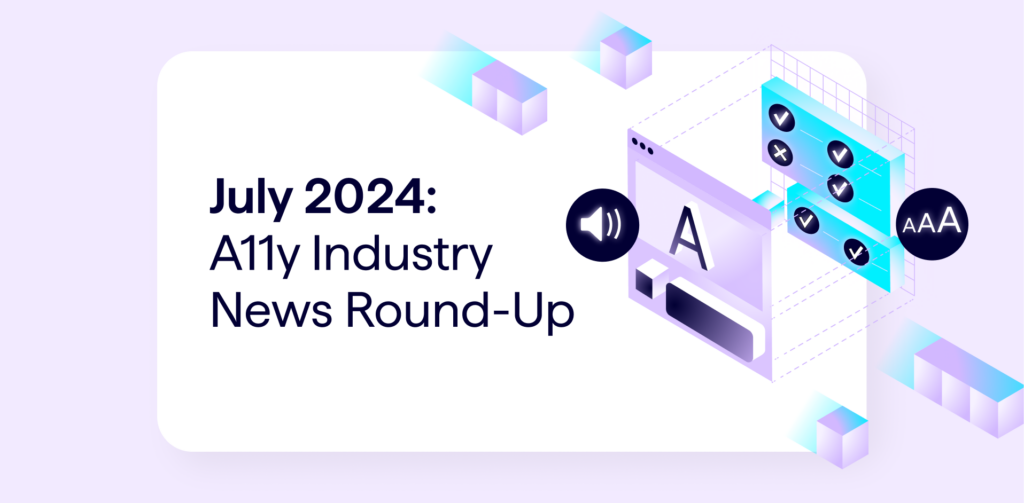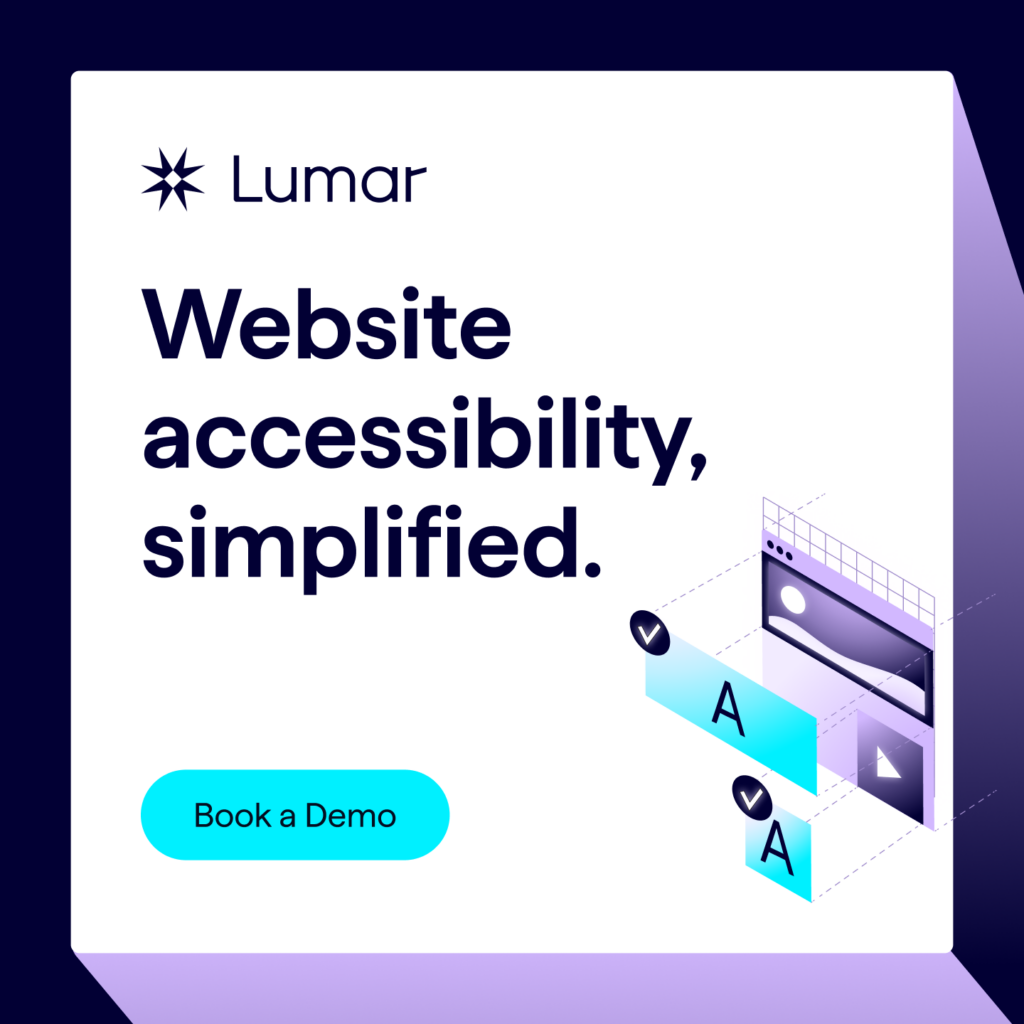What happened in digital accessibility this month?
Each month, we’re rounding up some of the top headlines for web accessibility professionals — with help from our a11y expert friends at QualityLogic.
In July, we’ve seen new web accessibility regulations enacted by the US Department of Health and Human Services, new W3C accessibility guidance drafts ready for review, new CDC data that shows the importance of accessibility for more than 70 million Americans, and more.
Read on for the top news this month!
New US Section 504 accessibility regulations for the healthcare sector went into effect this month
The US Department of Health and Human Services (HHS) has now finalized a rule prohibiting discrimination against people with disabilities in all health and human service programs, with massive implications for the healthcare sector. The rule went into effect on July 8, 2024.
Relevant to web accessibility: Any program that receives funding from the HHS now must ensure that mobile applications and websites comply with WCAG (Web Content Accessibility Guidelines) version 2.1 at Level AA, closely mirroring the new DOJ Title II web accessibility regulations.
Compliance deadlines will depend on the number of people employed by an organization:
- 15+ employees – Organization must comply by May 2026
- Under 15 employees – Organization must comply by May 2027
Exceptions to the web accessibility rules will be made in certain cases, such as pre-existing social media posts, archived web content, and third-party or UGC content (such as page comments from users or customers) on the organization’s website.
[Source: US HHS Section 508 Fact Sheet ]
New CDC data show more than 70 million American adults report having a disability
The CDC released new data in July 2024 showing that more than 70 million US adults report having a disability. The latest data from the CDC’s Behavioral Risk Factor Surveillance System (BRFSS) reveal that more than 1 in 4 (70+ million) adults in the United States reported having a disability. The data can be explored in the CDC’s Disability and Health Data System (DHDS).
[Source: CDC Press Release ]
ACM’s US Technology Policy Committee releases new statement in support of adding comprehensive digital accessibility regulations to the ADA
The Association for Computing Machinery’s (ACM) US Technology Policy Committee (USTPC) has released a new statement in support of mandatory comprehensive digital accessibility regulations in the ADA. The US DOJ recently updated the Americans with Disabilities Act (ADA) with requirements for the accessibility of web content and mobile applications. The aim of the ADA revision is to ensure that services, programs, and activities provided by state and local governments online and through mobile apps are accessible to people with disabilities.
[Source: Association for Computing Machinery (ACM) – July Press Release ]
W3C releases “Collaboration Tools Accessibility User Requirements” draft for wide review
WC3’s Web Accessibility Initiative (WAI) has released a draft of its proposed new user requirements for web-based collaboration tools. This document outlines various accessibility-related user needs and requirements for both synchronous and asynchronous web-based collaboration tools based on various collaborative engagement scenarios.
[Source: W3C / WAI announcement]
Updated W3C Resource: “How People with Disabilities Use the Web”
The W3C’s a11y resource, “How People with Disabilities Use the Web”, has now been updated with new user stories and new videos. The resource describes tools and approaches that disabled people use to interact with technology, and it covers barriers that people experience because of inaccessible digital technology. The resource helps developers, designers, content creators, and others understand the reasons behind creating accessible digital products.
[Source: W3C / WAI announcement]







